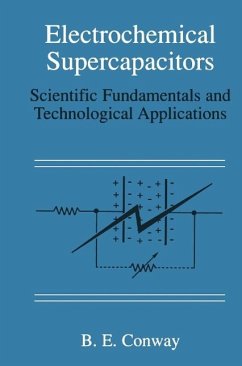The first model for the distribution of ions near the surface of a metal electrode was devised by Helmholtz in 1874. He envisaged two parallel sheets of charges of opposite sign located one on the metal surface and the other on the solution side, a few nanometers away, exactly as in the case of a parallel plate capacitor. The rigidity of such a model was allowed for by Gouy and Chapman inde pendently, by considering that ions in solution are subject to thermal motion so that their distribution from the metal surface turns out diffuse. Stern recognized that ions in solution do not behave as point charges as in the Gouy-Chapman treatment, and let the center of the ion charges reside at some distance from the metal surface while the distribution was still governed by the Gouy-Chapman view. Finally, in 1947, D. C. Grahame transferred the knowledge of the struc ture of electrolyte solutions into the model of a metal/solution interface, by en visaging different planes of closest approach to the electrode surface depending on whether an ion is solvated or interacts directly with the solid wall. Thus, the Gouy-Chapman-Stern-Grahame model of the so-called electrical double layer was born, a model that is still qualitatively accepted, although theoreti cians have introduced a number of new parameters of which people were not aware 50 years ago.
Dieser Download kann aus rechtlichen Gründen nur mit Rechnungsadresse in A, B, BG, CY, CZ, D, DK, EW, E, FIN, F, GR, HR, H, IRL, I, LT, L, LR, M, NL, PL, P, R, S, SLO, SK ausgeliefert werden.
`It is an excellent resource in that it provides a very comprehensive and in depth coverage of supercapacitor technology.'
IEEE Electrical Insulation Magazine, 18:2 (2002)
IEEE Electrical Insulation Magazine, 18:2 (2002)
`It is an excellent resource in that it provides a very comprehensive and in depth coverage of supercapacitor technology.'
IEEE Electrical Insulation Magazine, 18:2 (2002)
IEEE Electrical Insulation Magazine, 18:2 (2002)









